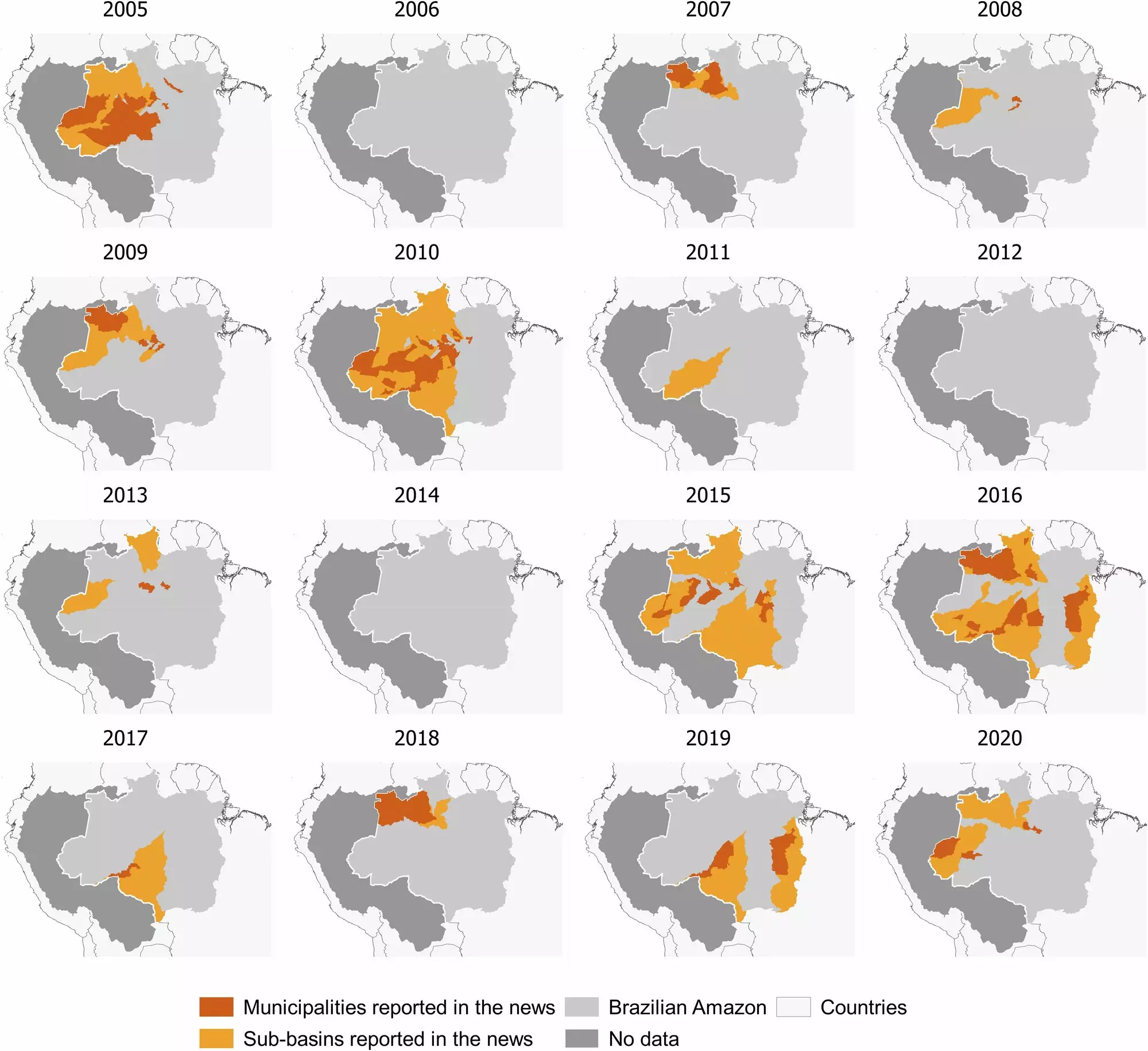The Amazon rainforest, often heralded as the lungs of the planet, has been confronting an inherited threat for the past two decades: increasingly severe droughts. As reported by a study from the Institute of Environmental Science and Technology of the Universitat Autònoma de Barcelona, these environmental upheavals symbolize more than just an ecological crisis; they represent a significant assault on the livelihood and well-being of the Amazonian people. Since 2005, extreme droughts have become increasingly frequent and intense, characterizing a transformative era for both the environment and indigenous communities reliant on its resources.
The ongoing climate crisis, compounded by human-driven actions such as deforestation, significantly alters the hydrological landscape of the Amazon basin. With droughts lasting an average of 30 days longer than historically expected, the repercussions cascade down through various sectors. These prolonged low-water levels are not merely a metric of environmental change; they substantially interfere with the ways of life for countless residents who depend on river systems for transport, trade, and sustenance.
Isolated Communities: A Growing Reality
A striking finding from the study reveals that approximately 50% of non-Indigenous communities and 54% of Indigenous villages in the Brazilian Amazon face potential isolation due to drought conditions. This statistical reality is disheartening, as movement within this region predominantly occurs via boats along the river systems. Such isolation signifies not only a logistical nightmare but also a cultural and economic stranglehold on communities that are already vulnerable to external pressures.
The consequences of water scarcity are compounded by the loss of access to healthcare, education, and vital resources such as fish and game. For residents of remote rural areas, rivers and wetlands are lifelines; when those lifelines dry up, the severe limitations can lead to desperate outcomes, including food insecurity and reduced quality of life. The new research underscores a fragile connectivity that’s being irrevocably altered, calling attention to the intersection of climate-induced changes and social vulnerability.
A Multifaceted Analysis of Drought Impacts
The study employs an interdisciplinary approach, establishing itself as a pioneering contribution to understanding drought effects in the Amazon basin. By leveraging spatial analysis alongside hydrological techniques and media content scrutiny, the researchers comprehensively assessed the cascading impacts that droughts impart on both human and ecological systems. This multifactorial method is notably crucial, as it sheds light on the intricate relationships at play; for example, the way deforestation and resulting sedimentation further complicate river navigability.
In reflecting on the study’s findings, Dr. Letícia Santos de Lima emphasized the urgent need for proactive policy measures, commenting, “This is the new reality of the Amazon.” Her call for immediate and robust action echoes the sentiments of many climate advocates who argue for a shift away from reactive strategies towards long-term adaptation planning.
Policy Implications: The Need for Sustainable Solutions
However, analyzing the policy responses—or lack thereof—reveals a disappointing landscape. The study highlights a common pattern where governmental actions remain largely reactive, as crises unfold rather than anticipating and mitigating the emerging threats. Such complacency is detrimental, as it perpetuates a cycle of neglect that endangers not just the ecological stability of the region, but also the socio-economic fabric of its communities.
Moreover, the suggestion that building more roads could alleviate isolation during droughts is fraught with danger. While improved road connectivity may seem like a benign solution, it often leads to increased deforestation and exacerbated impacts on local ecosystems, further diminishing rainfall and navigability. The implications of such infrastructure development reveal a shortsightedness that must be rectified.
A Call for Global Responsibility
As the world looks towards solutions to address climate change, the Amazon should serve as a focal point for global responsibility and action. The plight of the people and the biodiversity that reside in this extraordinary ecosystem requires urgent attention and a commitment to sustainable practices. Only by harmonizing environmental stewardship with indigenous rights and local needs can we hope to create resilient communities capable of thriving in a changing world.
In confronting the crises of drought and ecological stress, we not only defend an irreplaceable natural resource but also uphold the dignity and survival of the people who call the Amazon home. The time for transformative action is not in the distant future; it is now.

